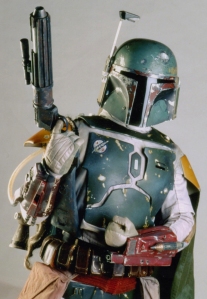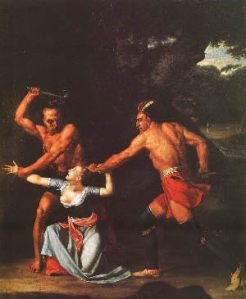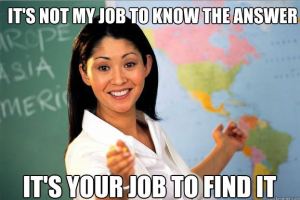 Wheel of Time 07: A Crown of Swords by Robert Jordan
Wheel of Time 07: A Crown of Swords by Robert Jordan
This review is kinda spoiler-heavy. Just so you know.
With this book, we have reached the midpoint of the series and like you might expect of a series this size, this is where things get soft in the middle.
If you look at various online reviews of this book and others at this point in the series, you’ll see comments like, “It was so boring – nothing happened.” They’ll complain about having too many characters to follow and the story getting stretched out too thinly, which I addressed back in my review of The Fires of Heaven. And as I said in that review, the critics aren’t entirely unjustified in getting frustrated – the story has been divided into several major plot threads that don’t seem to have any chance of meeting up in the near future. It seems like about four different novels that all happen to inhabit the same world at the same time.
Here’s what I think is happening: at about this point in the series, Jordan started thinking of this all in terms of a much larger mega-story, rather than a series of books, with the narrative structure that would entail. It does explain a great deal, especially the rather forced nature of the climax in which Rand finally confronts the Forsaken Sammael and wins the crown of Illian. Exhausted and wounded, Rand goes into pitched battle against a stronger, more prepared enemy for no other reason than because he thinks the timing is right. Whether it is or is not is questionable, but there’s no real reason for that climax to have appeared at the end of that book.Especially since it occurs four days after the rather exciting opening events of the next book, The Path of Daggers, a fact which we don’t even learn about until roughly halfway through that book. I get the feeling that if it had been possible to publish a single 2,000 page book as volume seven in the series, Jordan would have done it, allowing him to place the attack on Sammael and the use of the Bowl of the Winds in their proper order. But the good people at TOR know such a thing to be impossible, so a Climactic Finale was jury-rigged into this text in the hopes that rabid fans would still buy the next one.
Which, of course, we did. It smooths out a bit if you’re reading the books in rapid succession, but let me tell you – the two year wait between book seven and book eight was a killer.
As for the claim that “nothing happens,” well that’s just patent nonsense. Elaida, the Amyrlin of the White Tower, has found herself under the thumb of her Keeper, Alviarin, for the sin of being extremely short-sighted and overconfident. On the move with the rebel Aes Sedai, Egwene starts to build support for herself through means that no one ever expected – least of all her – and lays the groundwork to do the impossible: attack the White Tower itself.The Shaido Aiel have been broken and dispersed, but their leader, Sevanna, still holds dreams of leashing Rand al’Thor and becoming the power behind the Chief of Chiefs. The Aes Sedai who tried to capture Rand have been put under the attentions of the Aiel Wise Ones, and all of the Aes Sedai – from the Tower and from Salidar – have taken an oath of fealty to him. What this will mean in the long run is unclear, but until they are released, they will serve him. Until Cadsuane Melaidhrin appears, with plans all her own for the Dragon Reborn. And with Min, Rand tries to settle the rebellious Lords and Ladies in Haddon Mirk, who refuse to acknowledge him as the ruler of Cairhien, Andor or Tear. What he finds, of course, is blood, pain and death – only some of it his.
In the main plot line of the book, Mat, Elayne and Nynaeve are in Tanchico, searching for the Bowl of the Winds – an artifact which could, if they’re lucky, undo the Dark One’s touch on the weather and finally end the summer that has held the land in its grip for the last three books. What we get out of this plot line is significant in many, many ways – we learn about what happens to women who are turned out of the White Tower, and why being so very strict may have cost the Aes Sedai dearly over the last two millennia. We also get a hint as to what causes the famous “ageless” look that so many Aes Sedai have, and why the Three Oaths may do more harm than good in the long run.
In fact, between the Ebou Dar Kin and the Sea Folk, it looks like the nature of female channelers in this world is going to be radically upended by the time the series ends. The White Tower, which has stood as the unchallenged symbol of One Power dominance, will no longer possess a monopoly on channelers, and this will force a great many changes not only on Aes Sedai, but on the public perception of women who can use the One Power. But all that is in the future. For me, one of the most touching moments of this part of the series is Reanne Corley’s simple line: “I can be Green.” You’ll know it when you get to it.What’s more, there are some very significant character moments in this book, not the least of which is that Mat finally gets his thanks for saving Elayne and Nynaeve from the Black Ajah way back in The Great Hunt. Elayne asserting herself among the “real” Aes Sedai is a marvelous scene, as is Mat facing down an entire room of women who would make a king step lightly. The interplay between Mat – the rough-and-tumble rogue/general – and Elayne – the daughter-heir of a kingdom and newly-minted Aes Sedai – is highly entertaining, especially with the help of Nynaeve and her braid-tugging, and Birgitte’s ability to drink like the soldier she is.
As an aside, we also learn from Mat what must be one of the strongest – and strangest – curses in this world, given the conditions under which he utters it. I have to admit, with invectives in this series such as “Burn me,” “Flaming” and “Bloody” – words that draw glares from the more prim and proper segment of society (i.e. women), I don’t really feel the power that they should have. Made-up curse words, such as “Gorram” (Firefly), “Frak” (Battlestar Galactica) and “Sprocking” (Legion of Super-Heroes) feel more, well, curse-ish to me.
“Sheep swallop and bloody buttered onions”? Not so much.They have plenty to curse about, though. The Black Ajah are in Ebou Dar, too, searching just as hard for a cache of artifacts from the Age of Legends, under orders from Sammael, and a whole new danger arises in the form of the Gholam – a creature made to kill channelers. And once the Seanchan decide that it’s time to take Ebou Dar, that’s just icing on the cake.
So to say that “nothing happens” is to completely ignore everything that, well, happens. It just doesn’t follow the forms and narrative structures that we have expected up until this point, and there are a lot of threads left dangling between books. But this is the point where it becomes vividly clear that you are reading a much larger story, and you should count yourself lucky that you can go from one to the next without stopping.
This did make me worry slightly, of course, about the last books in the series. The book written by Sanderson was originally supposed to be one volume – A Memory of Light – but the narrative demands of the story led to it being split among three volumes. So my question, prior to reading them, was this: will we see the same thing in those books that we saw in this one? A hasty climax, put in the end of the book because that’s what’s supposed to be there? Or does Sanderson have a good, well-planned structure for the final three books that makes each one self-contained yet which makes the final three flow inexorably to the end?
So far so good, but there’s one more left. We shall see.
———————————————
“There are no clear paths. Only pitfalls and tripwires and darkness.”
– Lews Therin Telamon
———————————————
Robert Jordan at Wikipedia
Robert Jordan at Tor.com
A Crown of Swords at Wikipedia
Wheel of Time at Wikipedia
A Crown of Swords at Amazon.com
Wheel of Time discussion and resources (spoilers galore):
Theoryland
Dragonmount
The Wheel of Time Re-read at Tor.com
The Wheel of Time FAQ
Wheel of Time at TVTropes.com















































